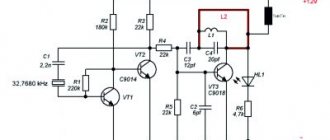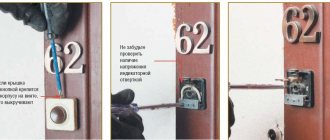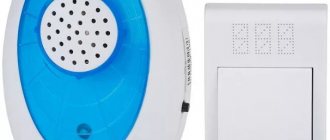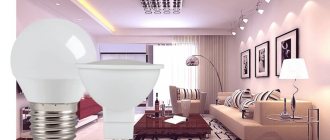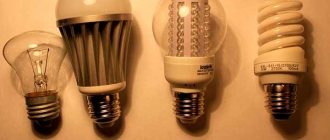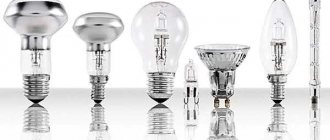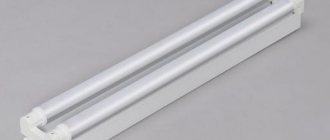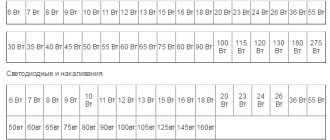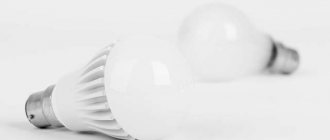The marking of lamps gives the car owner information about the type of base, compliance with current standards, type of plug connector, rated power, voltage and operating current, as well as some other things. In most cases, the relevant information is applied to their base. Using the information provided, the car owner can easily choose the best lamps for his car. However, many drivers are confused by the numerous incomprehensible at first glance icons on the lamp and its packaging. Therefore, we will help you understand it in as much detail as possible and find out what is the meaning of the markings and existing symbols on car lamps.
Types of bases and their descriptions
The main problem that car owners face when deciphering the designations of car lamps is the presence of different standards, and, accordingly, the designations themselves. Lamps available on the domestic market are designated according to two types of standards - the so-called “Soviet” and European. The first standard has the number GOST 2023.01-88 and it is more simplified than the European one. So, the letter “A” in it denotes a “car” lamp, and the abbreviation “AMN” means a miniature car lamp. If the designation contains the letter C (that is, AC), then this means that this is a soffit lamp, and if the designation is AKG, then this is an automobile quartz halogen lamp.
Further, after these definitions, its power (in Watts), rated voltage (in Volts) is written on the lamp, and at the end of the designation the development number or simply technical information is added that has no practical value for a particular car enthusiast. The problem with the “Soviet” GOST is that it is not unified. That is, on different lamps you can find information in different symbols and in different places, for example, on bases, bulbs, and so on.
As for the European ECE standard, it is uniform, so it is easier to understand. So, in accordance with it, the letters on the lamps mean:
- T - miniature base lamp. Typically used in car front parking lights.
- R - a lamp with a 15 mm base and a bulb with a diameter of no more than 19 mm. Also installed in car side lights.
- R2 - diameter of the flask is about 40 mm. Incandescent lamps used in Soviet times for high and low beam. At the moment they are almost not used.
- P - lamp with a 15 mm base and a bulb with a diameter of up to 26.5 mm. Can be used in turn signals and/or as brake light bulbs.
- P - if this capital letter is placed at the beginning of the marking, this means that the lamp is flanged; information about it is given below.
- W - if this letter is installed after the number, then it indicates the power of the light bulb (for example, 60/55 W), and if it is not there, then the number indicates the number of the specific lamp model (however, most often it is used to indicate power).
- W - if this letter appears at the beginning of the marking, then this tells the buyer that the lamp is equipped with a glass base. Typically, such lamps are used in sidelights and for illuminating license plates.
- H - the letter indicates that the lamp is halogen.
- Y - if the letter is before the number, this means that the lamp has an orange bulb color.
- VA - means that the lamp is a pin lamp with a symmetrical arrangement of pins in relation to each other.
- BAY is a pin lamp with one of the pins offset in height.
- BAU is a pin lamp with one of the pins offset along the radius.
- BAZ is a pin lamp with one of the pins offset in height and radius (more information about pin lamps is given below).
- SV is a soffit lamp with a base on both sides. Used for side markers and reversing lights. Its description is given below.
- E - this lamp has a threaded base.
- X - this marking is used on lamps of non-standard designs.
Sometimes you can find a lamp with a unique designation, for example, 9145 is a special fog lamp.
The indication of voltage and power on double-filament headlights will be slightly different from single-filament ones. For example, the designation 12V21W tells the car owner that in front of him is a single-filament lamp with a power of 21 watts, designed for a nominal voltage of 12 V. If the lamp is double-filament, then an example of the designation will be as follows: 12V21/4W. This means that the nominal voltage for the lamp is still the same 12 Volts, but the first filament has a power of 21 Watts, and the second - 4 Watts.
Lamps differ in a variety of parameters - shape, operating voltage, power, and so on, but the most significant difference is the type of base. In European countries, the marking of automobile lamps is carried out in accordance with two current standards - IEC (lamps and their fittings, safety requirements, etc., there are many similar standards) and DIN (lighting standards, several similar documents are also in force).
Also, often at the end of the markings on the bases you can find designations of how many contacts the lamp has isolated from the base. There are such options:
- S (single) - one;
- D (duo) - two;
- T (tres) - three;
- Q (quatro) - four;
- P (penta) - five (connecting base).
In the decoding of car lamp bases you can also find information about the shape of the bulb. It is also indicated using letters. In particular:
- B — oval-shaped flask (B);
- RP - wide at the top and tapering at the bottom;
- S - resembling the shape of an eggplant;
- G - in the form of a ball;
- T - in the form of a cylinder.
Also, by the number of letters “C” in the lamp index, you can understand that this is a lamp with one (C) or two (SS) upper spirals.
| Scope of application | Lamp type | Base type |
| Head light and fog lights | R2 | P45t |
| H1 | P14.5s | |
| H3 | PK22s | |
| H4 (near/far) | P43t | |
| H7 | PX26d | |
| H8 | PGJ19-1 | |
| H9 | PGJ19-5 | |
| H11 | PGJ19-2 | |
| H16 | PGJ19-3 | |
| H27W/1 | PG13 | |
| H27W/2 | PGJ13 | |
| HB3 | P20d | |
| HB4 | P22d | |
| HB5 | PX29t | |
| Xenon head light | D1R | PK32d-3 |
| D1S | PK32d-2 | |
| D2R | P32d-3 | |
| D2S | P32d-2 | |
| D3S | PK32d-5 | |
| D4R | P32d-6 | |
| D4S | P32d-5 | |
| Brake lights, tail lights, direction indicators | P21/5W (P21/4W) | BAY15d |
| P21W | BA15s | |
| PY21W | BAU15s/19 | |
| Side lights, side turn signals, license plate lights | W5W | W2.1×9.5d |
| T4W | BA9s/14 | |
| R5W | BA15s/19 | |
| H6W | PX26d | |
| Interior and trunk lighting | 10W | SV8.5 T11x37 |
| C5W | SV8.5/8 | |
| R5W | BA15s/19 | |
| W5W | W2.1×9.5d |
There is another universal designation that indicates the approval number (standard) to which this particular light bulb conforms. It is designated as the letter E with a number (for example, E1), and the whole thing is enclosed in a rounded rectangle (or circle). The correspondence between numbers and countries is tabulated.
| Number | A country | Number | A country | Number | A country | Number | A country |
| 1 | Germany | 11 | Great Britain | 22 | Russian Federation | 34 | Bulgaria |
| 2 | France | 12 | Austria | 23 | Greece | 37 | Türkiye |
| 3 | Italy | 13 | Luxembourg | 24 | Ireland | 40 | Republic of Macedonia |
| 4 | Netherlands | 14 | Switzerland | 25 | Croatia | 42 | European Union |
| 5 | Sweden | 16 | Norway | 26 | Slovenia | 43 | Japan |
| 6 | Belgium | 17 | Finland | 27 | Slovakia | 45 | Australia |
| 7 | Hungary | 18 | Denmark | 28 | Belarus | 46 | Ukraine |
| 8 | Czech Republic | 19 | Romania | 29 | Estonia | 47 | South Africa |
| 9 | Spain | 20 | Poland | 31 | Bosnia and Herzegovina | — | — |
| 10 | Yugoslavia | 21 | Portugal | 32 | Latvia | — | — |
Numbers 15, 30, 33, 35, 36, 38, 39, 41 and 44 are not assigned to any country in the world (vacant).
In general, the following types of socles are widely used:
- H4 and H7 are the most common (near-far);
- H8, H10, H11 - for fog lights;
- W5W, T10, T4W - for dimensions and side direction indicators;
- P21W - for main turn signals;
- W21W, T20, 7440 - for reversing lights.
R2 lamps belong to the old generation of lighting devices and are used in two headlight lighting systems. Their use is limited to old cars and agricultural machinery.
Lamps with sockets of types H1 and H7 are used in four car headlight lighting systems. However, today H1 type sockets are considered obsolete and are used less and less, and if it could be used for both low and high beams, then with the advent of type H7 lamps, H1 lamps began to be used only in high beam systems and fog lights.
The popularity of the H4 base is due to its high performance characteristics. In particular, they are easy to install, adjust and replace. But such lamps have a significant drawback - a relatively low luminous flux. For example, the luminous efficiency for the low beam filament of such a lamp is about 1000 Lm, while, for example, for the H7 it is 1500 Lm.
To illuminate the dashboard, lamps with a plastic base are often used. They are distinguished by reliable fastening of the lamp contacts, socket and power plug. The undoubted advantage of such lamps is that the absence of metal components ensures that they cannot oxidize, rust or stick. In addition to halogen lamps, there are the same gas-discharge lamps with a plastic sealing cartridge.
The newest and most technologically advanced cartridges are types H8, H9 and H11. They are distinguished by a powerful luminous flux and are the only ones that can be used in modern, particularly compact headlights that still provide a strong luminous flux. Lamps in the base HB3 and HB4, as well as H8, H9 and H11, can be used either separately or together with gas-discharge xenon-metal halide lamps. This combination of different types of lamps provides maximum and very high-quality light output.
HB1 and HB2 are double-filament headlights for American cars, HB3 and HB4 are single-filament headlights, more often found on Japanese cars
Base with protective flange
The presence of a protective flange is indicated by the letter P, with which the marking of the base itself actually begins after indicating its type (for example, H4-P43t). Powerful lamps for headlights are usually produced with such a flange. In particular, low beam, high beam, combined versions, as well as fog lights designed for base types H3, H4, H7, HB3, HB4. Similarly, less popular headlights of types H1, H12, R2 and some others are produced.
Soffit
As mentioned above, soffit lamps are designated SV. This car lamp has a cylindrical shape and a body length of about 30...40 mm, as well as two bases at the edges. The choice of such a design is due to considerations of saving internal space and the desire to minimize the size of the lamp shade. These light sources are usually used in the interior of a car, in particular, in lamps that are built into its upholstery. Less commonly, such lamps are used in lamps designed to illuminate a car registration plate, as well as for brake lights (designation example - C5W-SV8.5-8).
Pin
Pin lamps have a smooth cylindrical base with two pins for rigid fixation. For lamps with the designation BA they are located symmetrically, and for products with the designation BAY and BAZ they are located asymmetrically. In the latter case, the displacement of the pins makes it impossible to install a lamp of another type, in particular, white instead of yellow or vice versa. An example of a designation is PY21W-BAY15s. In this case, this inscription can be deciphered as follows: the lamp has a yellow bulb, a pin base with a diameter of 15 mm and one contact, the lamp power is 21 W.
Lamps with glass base
Lamps with a glass (not metal) base are designated by the English letter W. After it, the inscription gives the size of the base in millimeters. Such bulbs are in great demand among car enthusiasts, since they are widely used in various lamps - direction indicators, side lights, dashboard and so on.
New types of socles
Currently, more and more advanced LED lighting is being developed. Such lamps produce a powerful luminous flux, and at the same time consume less energy and have a very long resource (service life). However, many of them are also designed for installation of the standard H-base described above. Please note that all LED lamps have the English abbreviation LED in their designation.
LED lamps have different bases. They can be designed both for installation in standard headlights (for example, H1), and in specially designed seats for them. Often they are designed specifically for installation in new lamps that have special optics, so this point must be clarified further before purchasing a particular lamp. Otherwise, installing such a lamp in a regular headlight will not give the desired effect, there will be poor lighting, and the lamp itself and the headlight itself may overheat, melt and ultimately fail.
Car lamp sockets, types, designation
01.04.2018
Science does not stand still, which also applies to vehicle lighting. Every year the number of types of car light bulbs is growing, the market is developing rapidly and it is becoming increasingly difficult to systematize them. Currently, there are about a hundred light bulbs in a car for various purposes. Some are used outside, helping to efficiently illuminate the road in near and far optics or PTF, others perform a decorative function inside the cabin, highlighting the dashboard and other elements.
Car lamp sockets are the most important part, performing the following functions: - holding the housing in the socket - transmitting current from the network to the luminous part - protection from harmful environmental factors.
So, for example, for models with an incandescent filament, it is extremely important to maintain functionality longer; in case of shaking and vibration, securely fixing it in the connector is a primary task. Gas-filled light bulbs require excellent sealing to prevent gases from escaping. For LED lamps this task is not set.
, the types of car lamp bases were so disordered that it was sometimes impossible for motorists to make a choice. This is due to the fact that each manufacturer came up with its own designations, convenient and understandable only to him, so the number of markings was almost infinite. A document created in the late 80s of the 20th century - GOST 2023-88 - managed to put all this in order. Of course, after 30 years, it becomes a little outdated and loses relevance, but still, it remains the most important support for systematization.
Types of car lamp bases can be classified depending on their parameters. According to the number of wires, the following letter is added to the name: S - one contact D - double T - triple Q - four wires P - five.
The following are the main types and their letter designations, regulated by GOST.
A – car light bulb. AKG – quartz halogen. AS – soffit. AMN is a miniature auto lamp. T - miniature base, the holder is combined with the flask. Example: T5 4W - 5/8" diameter flashlight with 4 watts of power. R – with a 15 mm metal base and a 19 mm housing, for example: R 5W – energy consumption of 5 watts. Almost never used. P - with a 15 mm base and a bulb diameter of up to 26.5 mm. R2 - Diameter about 40 mm. Used in Soviet times for high and low beams. Nowadays
SV (C) – soffit (with a double-sided base). Typically used to illuminate the interior and license plates. For example SV8.5 5w. BAY – pin type, in which one of them is offset in height. VA is a pin type, in which each pin is located symmetrically relative to the others. BAZ – pin with offset pin in height and radius.
W – the holder is made together with a glass flask. Example (W 2*4.6d 5W) – fasteners together with a glass bulb, thickness 2 mm, width 4.6 mm, 2 contacts, power 5 watts.
Car lamp base H – used for halogen car lamps, the most common among motorists. They may have a different fastening element, but will always begin with the same letter, indicating halogen. Sometimes there may be digital symbols - 9145 - fog lights. There is also a marking based on the color of the glow, so the letter Y makes it clear to the buyer that the bulb has an orange tint.
Even an experienced car owner is not always able to determine the type only by the appearance of the lamp; for this purpose, there is a designation system that helps you choose the right lighting for your vehicle.
Description of halogen lamp markings
1
— Manufacturer or brand name.
2
- Type of lamp base.
3
- Rated voltage for which the lamp is designed.
4
- Rated lamp power for high and low beam.
5
- Symbol of the country where the lamp manufacturing standard has been adopted (a list of countries by number is given below in the text of the material).
6
— Designation of the lamp model according to the manufacturer’s documentation.
7
- The letter U in this case means that the lamp is halogen.
Halogen car lamps are perhaps one of the most common types. They can be easily recognized by their shape, but on their base and flask you can often find symbols that are difficult to understand for a car owner who is incompetent in this matter. The first thing worth mentioning is that halogen lamps on the base are designated by the English letter H (usually it comes at the very end of the row with encrypted data, starting with information about the manufacturer). On products of some well-known manufacturers, for example Philips, sometimes halogen lamps at the end of the code are identified by the letter U. Currently, there are several types of them - H1, H2, H3, H4, H7, H11, H27, HB3, HB4 and others. They are not interchangeable and only the lamp prescribed for it can be installed in a particular headlight. This is due to its geometric shape and size.
Remember that after installing new lamps it is often necessary to re-adjust the headlights. Or just check if they are configured correctly.
Currently, many lamp manufacturers produce so-called “blue” lamps or “invisible” lamps. In the first case, they are designated as Blue (translated from English as blue, blue). As the name suggests, their light has a bluish tint. Usually, in addition to the inscription directly on the bulb and on the packaging, the glass of such a lamp itself also has a bluish tint. Similarly, “invisible cameras” are marked with the English word Silver. They have a white tint. This designation is applied both to the lamp and to its packaging.
Often in the description of a particular lamp you can find the inscription +30%, +50% and so on (often on their packaging there is an inscription up to +…% more light or similar). This means that, according to the manufacturers, this light bulb, when consuming the same amount of energy, produces a luminous flux that is a specified percentage more than a similar stock one. In fact, this is not always the case, and depends on both the manufacturer and the specific lamp model. This information needs to be clarified further on the Internet or in the literature. Be careful, often such an inscription is just a marketing ploy, the purpose of which is to mislead the buyer .
Lamps with an increased resource are designated by the English word LongLife (literally - long life). These products do last longer, but check the packaging for exact specifications as they may vary significantly. Another designation for similar long-life lamps is HD LL. In particular, such lamps are labeled in this way by well-known manufacturers Philips and Narva. But the manufacturer Osram labels its similar products with the simple letter L (Long).
When buying a new lamp, you can take a similar old one with you and go to the store with it. And then, on your own or with the help of sellers, select the same or its analogue with any characteristics changed to your taste.
Marking
When choosing lamps for a car, you need to take into account:
- conditions of use (high and low beam, fog lights, interior, turn signals, dimensions);
- car brand;
- power plant data.
The most popular in the automotive industry are halogen and xenon lamps. In the last decade, LEDs have also performed well.
A combined type of car lamps appeared on the market not so long ago. It is a design with 2 spirals, each of which can perform its own autonomous function.
To facilitate the selection process, manufacturers have introduced markings - alphabetic and numerical designations that allow you to accurately determine the type of light source and its dimensions.
It is worth noting that domestic, American and European markings of automobile lamps based on the type of base may differ.
America and Europe
The European and American classification of lamps (ECE) is presented in letter designations:
- T (miniature base) - used most often in dimensions;
- R (base d=1.5 cm and bulb - up to 19 mm) - also for side lights;
- R₂ (incandescent lamp of the same diameter, but with a 4 cm bulb) - previously used to equip the high and low beam systems, but is no longer used;
- H – halogen;
- Y – designation of an orange-colored glass flask (if the letter marking appears before the numerical value);
- BA – pin (with symmetrical pins);
- BAY – pin (with a height shift);
- BAU – pin (with radial offset);
- VAZ – pin (with offset in height and radius);
- S – soffit – used for interior lighting;
- E – with screw thread of the base;
- X – non-standard design;
- P – (with base d=1.5 cm and bulb – 26.5 mm) – for turn signals and brake lights;
- P - in case of marking at the beginning of the code - flange;
- W – power (60W);
- W – the Latin letter at the beginning of the code indicates the presence of a glass base (used to illuminate the number).
CIS
Domestic labeling was developed on the basis of GOST standards (No. 2023.01-38). According to this, all types of car lamps are designated as:
- A – ordinary;
- AMN – automobile miniature;
- AS – soffit;
- AKG – quartz halogen;
- T – miniature;
- R – with a metal base;
- R2 – with a glass bulb d over 40 mm;
- P – with a base of 15 mm and a flask of no more than 26.5 mm;
- SV(C) – double-base soffit;
- H – halogen;
- Y – designation of an orange glass bulb;
- VA – symmetrical pin;
- BAY – pin (with a height shift);
- VAZ – pin (with offset in height and radius);
- W – with glass base.
Important! The last 6 positions coincide with the international marking of car lamp bases.
A classification of the number of connected contacts has also been developed:
- S – 1 contact;
- D – 2 contact;
- T – 3 contacts;
- Q – 4 contacts;
- P – 5 contacts.
Description of xenon lamp markings
1
— Manufacturer or brand name.
2
— Name of the country of origin.
3
- D2R - Type of xenon lamp base.
4
— The value of the rated power of the xenon lamp.
5
- 85126 - service information on the manufacturer's technical documentation.
6
- E1 - code of the country where the standard according to which the lamp is manufactured is adopted, in this case Germany.
7
— Technical information according to the manufacturer’s documentation.
Xenon lamps (similar to halogen lamps) have a special designation - the letter D. Please note that such xenon lamps must be installed only in headlights specially designed for them. This is due to the design features of the latter. Otherwise, they will not provide the proper luminous flux, and this can be mistakenly taken for their low quality. However, there are also “xenon lights” that can be installed instead of “halogen” ones.
Xenon-based gas-discharge lamps can be divided into three large groups:
- For sockets H1…H27, HB3…HB5, which are installed in converted standard headlights of various vehicles.
- Bi-xenon headlights, designated H4M, HB1M, H13M and others with the same designation as the letter “M”. Their purpose is to replace halogen lamps, which are both sources of low beam and high beam.
- Xenon lamps with sockets type D1S, D1R – D4S, D4R. These light sources are installed by the automaker in the headlights right off the assembly line. Please note that the design of these headlights differs from traditional halogen headlights. Therefore, only such lamps need to be installed in them!
D2S D2R PHILIPS lamps are the very first versions of standard xenon lamps. They were invented in the late 1990s and were installed on some European cars. Remember that D2S xenon lamps are designed for installation in lensed headlights (where a lens is installed), and D2R - for installation in reflector headlights, that is, in those where there is no lens, but only a reflector. In no case should they be confused, because if you put D2R instead of D2S, the brightness will decrease significantly, but if you put D2S instead of D2R, the cut-off line will be more blurred, and the headlight will significantly blind oncoming drivers, which is unsafe on the road.
More advanced, replacing the lamps described above, were D4S and D4R. They began to be installed on Japanese cars Toyota and Lexus. They were distinguished by the fact that they did not contain mercury, that is, they were more environmentally friendly, which is why they acquired the name D4S XenEco. The brightness of these lamps is slightly lower than that of D2S. In particular, it is about 3050 Lm, while for D2S this value corresponds to 3200 Lm. However, these lamps must be disposed of at the appropriate points after they fail.
Conclusion
When choosing a particular lamp for your car, you must first of all follow the recommendations of the car manufacturer. The manual (or technical documentation) clearly indicates which lamps need to be installed in the headlights, as well as in the rear, side and interior (interior) lamps. First of all, you need to pay attention to the type of base, since it is this factor that ensures the purchase of a lamp that will be installed in the seat without any problems. As for the manufacturer, you need to make a choice based on the ratio of price and quality, as when choosing any other product. If you know of any other designations that are not included in this material, share this information in the comments below. In this way, you will help other car owners when choosing a specific lamp or when deciphering an incomprehensible designation.

